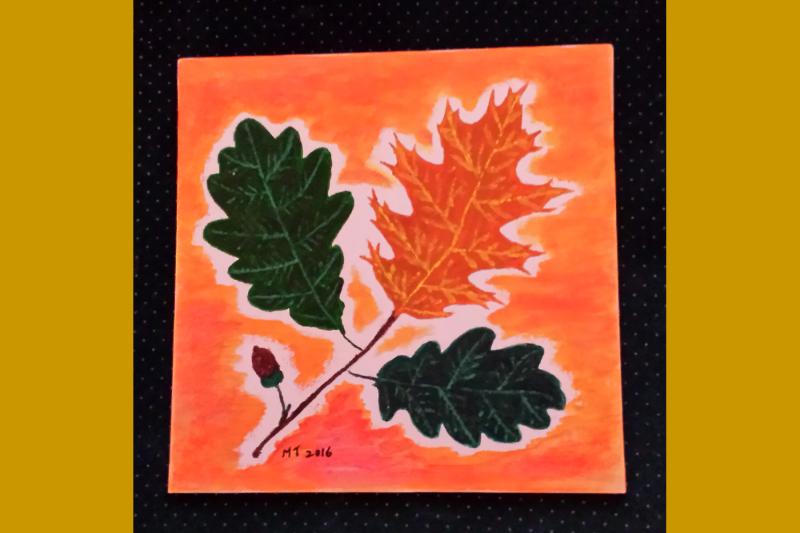
Oak Leaves
Philippine’s surname, Duchesne, means "of oak." For this reason we have always associated Philippine with the oak tree – the white oak that has leaves with rounded lobes. Another major species is the red oak with leaves with pointed lobes. Last year, the cabin in which I made my retreat was surrounded by white and red oaks. This cabin was also built by an aboriginal man. In this environment, while pondering our 2016 General Chapter Calls, I found myself painting a red oak leaf growing between two white oak leaves.
Philippine sailed from France in a ship across stormy seas in 1818 and landed in New Orleans, a rough journey that took over two months. This French woman who spoke only French crossed many frontiers – geographical, cultural, spiritual, social – in faith, as she responded to God’s call.
What might this painting be saying to us? Two white oak leaves supporting the growth of a red oak leaf may be Philippine protecting and blessing us as we explore new and different frontiers, holding our ventures close. "New frontiers," today, may be very different from what they were for Philippine. We are invited to be open to listening/hearing as new frontiers beckon. Some of us may be called afar, but new frontiers can also appear just where we are, inviting us to go to new peripheries "to accompany the life that is emerging there, to defend justice, peace and the integrity of creation in response to those who are searching for meaning in their lives, those who have been wounded, displaced, and excluded because of poverty, violence and environmental degradation." In the painting, St. Philippine Duchesne is saying, "Have courage, have faith." This holy woman, who was known to the Potawatomi as "the woman who prays always," prays with us now as we face and respond to the challenges of our time.
Marianne Tavares, RSCJ, Province of England – WalesImage: Marianne Tavares, RSCJ



